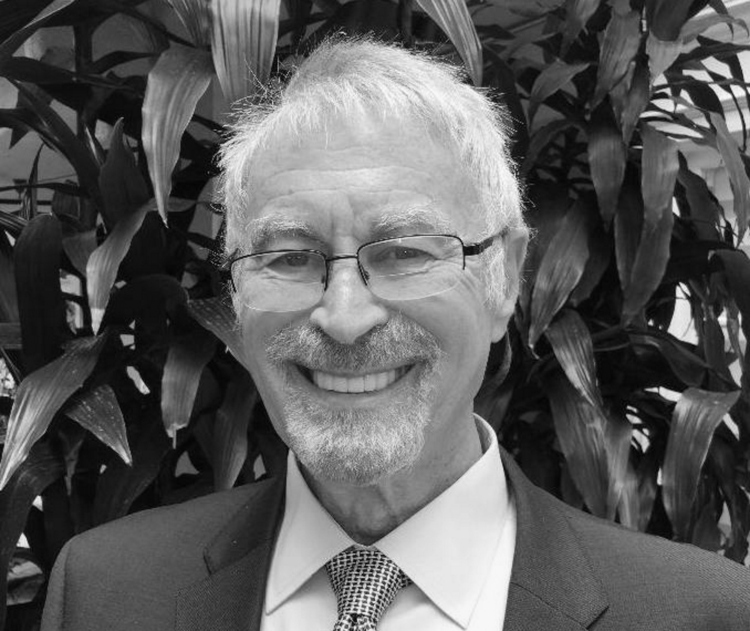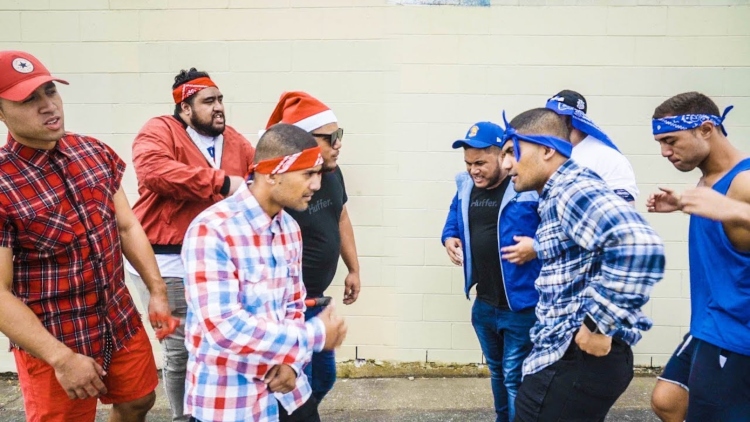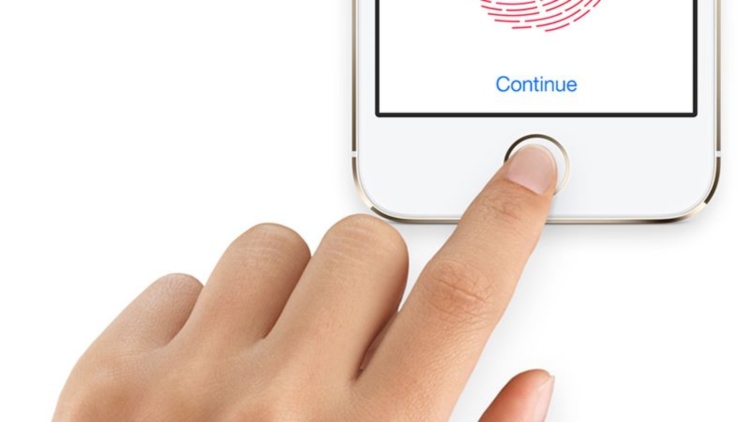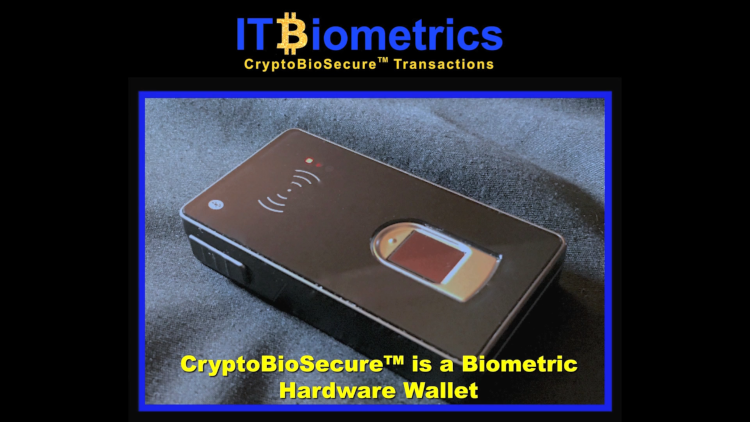Howard Prager: Introducing Biometrics to Blockchain
“Do I like Blockchain?” Howard repeats the question very clearly and very obviously as if speaking to someone with limited comprehension. “That is like asking if I like a chair,” he replies. “Yes, of course I like a chair. I like to sit on a chair but if there is no chair then will sit on the ground.”
Which is Howard’s way of saying that for him problem solving is more important than the technology that might be used to deliver it. For the purposes of sitting, a chair may very well be more comfortable but the same result can be achieved by using the floor.
Howard is unflappable and hugely focused. His spoken conversation is made up of full sentences and I can almost hear the punctuation. I imagine his hand writing would be elegant and flowing as well. I say hand writing, for he is 76 years young and yet he is the inventor and chairman of an innovative biometric solution for digital currencies, of which more later.

Meeting Steve Jobs and Bill Gates
Howard’s other claim to fame (actually he has a number which he articulates clearly and precisely without any form of boasting) is that he knew Steve Jobs growing up. They met when Howard was studying at UC Berkeley and Steve lived in San Jose. Steve rocked up to a party where Howard was working as a waiter. They just hit if off says Howard. He explains that back in the day there was very little demarcation between waiter and party goer. They got chatting and Steve invited him to another party, Howard went.
It turns out that Steve was a Buddhist like Howard, only subscribing to a different branch. This kicked off a friendly but sometimes heated debate as each tried to convert the other to their version, a debate which continued over the years.
Howard moved to LA with his first wife around the time Steve was setting up Apple.
“He (Steve) had me involved in a number of calls with Bill Gates which was very interesting,” remembers Howard. “The two had a big debate over their respective views of the IT universe. Steve worried about the security of consumers, he worried so much that he wanted to keep everything internalised. He had a number of use cases which he wanted to keep quiet.

“Bill on the other hand was in the middle of developing his version of DOS which preceded Microsoft. He wanted to co-operate and partner with anyone – they had two very different philosophies. Bill wanted to know how would any business kick off if it was kept secret and Steve was worried about the security if it wasn’t kept under wraps.
Howard was to cross paths with Bill later on in a non-profit role but he was never a friendly with Bill as with Steve.
The Global Children’s Fund
“I had moved to Colorado Springs with my third wife. Colorado Springs was well known for strong religious organisations most of which were active proselytizers. Based on my Buddhist beliefs I wanted to create a body that would unite all the different religions. I called it the World Friendship Place and my vision was to both have my own Buddhism recognised as well as create a community where all faiths would be welcomed. Initially, I invited the different Christian ministers to get involved, but then I opened out the invitation for lay leaders and people too. It evolved into an interfaith counsel and ultimately we named it the Global Children’s Fund.
“At this stage it had evolved into a movement to provide health care for children in developing countries. We created the idea of a telemedicine centre to provide medical care for humanity. We wanted to see how we could use information technology to support our vision.”

The Global Children’s Fund was designated an NGO and prepared a presentation for the UN. The team was by now a diverse group of people – working in insurance, real estate, medicine – who were motivated to help vulnerable children globally. Technology was obviously a key driver of the project and Bill Gates personally reviewed and liked the project.
“It was a way of showing what could be done.”
If the project was a success, his third marriage was not. “I left all my wives. I found out either they didn’t love me or I didn’t love them.” Howard was good at solving problems and less good at finding the right women to marry.
A Medical Miracle
Growing up Howard had had a keen interest in the early technology. He wanted to study computer science, but this was 1961 where it had not been properly accepted as a respectable discipline. Moreover, young men were supposed to do what their parents asked them. So, he studied law but didn’t enjoy it. “I didn’t like law and it didn’t like me.”
After graduating, he worked as a stock broker but on the R&D side of the business. Then the Vietnam War intervened and he was called up. However, after basic training, it was discovered he had a rare and life threatening cancer of this spine and he was discharged. He attended UCLA hospital where they conducted a ground-breaking, experimental surgery on his spine which was successful. “I was called a medical miracle.”
Howard has three times fought cancer – and is currently fighting his third bout – but says his Buddhism keeps him sane. It seems a bit as if cancer doesn’t like him – but it hasn’t reckoned on Howard not liking cancer. I’d put my money on Howard every time.
Working with the Crips and the Bloods
Meanwhile in California, with his second wife, Howard worked in syndication and properly management. Around that time, Congress had passed an Act which allowed successful businesspeople to build social housing. They were given huge tax write offs across any rental incomes. It was an attractive option for corporates. However, there was a downside. The resulting social housing could form a magnet for gangs and other disruptive groupings which could result in damage to the property, empty buildings (i.e. no tenants and no rents) and even no-go zones, such could be the violence.
Howard inherited one such project from the Housing Urban Development (HUD) department. It was a large development, with many apartments covering some 25 acres. Two gangs had taken over – the Crips and the Bloods – and no one dared go on site to collect rents in months. Howard was tasked with the renovation and given 48 months.
He did it in 11 months.
“Basically we invented the Broken Windows Policy,” he says.
Howard had tried to intervene in person but after one attendance he was so scared he refused to go back. He relied instead on his manager and his Buddhism.
“I knew the only way to make this work was to find an interest that would unite the tenants. We needed to give them a stake in the development. In this development, given the large grounds, we offered the tenants an opportunity to grow crops. HUD paid for the water, the seeds and the farming tools needed and in return asked the tenants to stop killing each other.
“At the same time, we fixed up all the broken windows in the common areas. Hence the name of the policy.”

Previously the management in HUD had looked at the project from the wrong direction according to Howard.
“They thought that if they could get in tenants they would use the rent money to fix the common areas. But from my Buddhist view I knew we had to do it the other way around. I knew we had to treat the people with respect and find a loving way to change the situation. In return, we asked them to stop murdering and raping the other people. It worked. Also, as we fixed up the common areas we attracted tenants who were law abiding and who wanted to see the project work. It was a win-win situation.”
His work in this development did not go unnoticed. The investment arm of the Vatican, the Immobiliare, had typically invested in high worth, low risk property – and had built up, as a result, a very rich portfolio. They approached Howard to help them make investments in more humanitarian projects – but without risking the investment.
This new role took Howard to far flung places such as the Philippines were he found investment opportunities where he was able to marry common interest with profitable return for the Vatican.
Solving the Blockchain Problem
Problem solving is a lifetime’s passion for Howard. “I’m the ultimate geek,” he says, “I will look at a problem until I can solve it. I will look at 40 to 50 different angles. I can’t let it go until I reach a resolution. Sometimes I will wake up at night just thinking about it.”
In a throwaway line, Howard admits he wasn’t able to use his same problem solving skills when it came to his wives. But then perhaps he hasn’t met the fourth Mrs Prager.
Which leads us nicely to his current project – ITbiometrics – a company he bootstrapped to solve the issue of being able to access digital wallets without losing complicated private keys.
Howard has been speaking with me from Barcelona where he is exhibiting at a Blockchain conference only days from his last cancer surgery.
“Introducing biometrics is an obvious solution,” he says. “But the current solutions out there are almost worse than useless.”
Howard points out the current finger print access offered on the iPhone can be tricked so easily as to make it worthless. Examples include capturing the print through wax or similar and then reprinting on a replica to fool the device right the way though to finger removal in a more extreme form (not normally used for hacking into an iPhone, but a possibility).

Facial recognition is also very hit and miss with similar looking family members being able to impersonate and access devices.
Howard put on his thinking cap. Access to digital currencies via private keys was one of the biggest issues with people losing or forgetting their keys. How much easier would be if reliable biometrics could be used?
Introducing Biometrics to Blockchain
Enter his project. Howard has invested in a biometrically operated digital wallet for cryptocurrencies, called the ‘CryptoBioSecure Fingertip Wallet‘ It has three unique attributes.
First of all, it registers a pulse and thermometer. Straightaway, dead fingers are off the table.
Secondly, it uses all ten fingers as a code. Howard points out reasonably that most people possess ten fingers (although as it happens I have a friend, also called Howard, who has only nine due to a childhood accident and in another aside I am related to Anne Boleyn who reportedly had 11 fingers in total – but I take his point, most people have ten fingers).

As Howard describes it – people can use a variety of fingers to create a variety of messages, including perhaps a distressed message in case of robbery. This too may be already pinged by a quickened pulse from first contact.
And there is also the opportunity for multi-signatories. Howard gives an example of a parent with children. If there was a signing mechanism to allow two signatories perhaps to release funds this might ease financial directions, including allowing children to spend funds following the death of the parent without need for legal intervention.
Coming to the close of our conversation is when I ask the blockchain question and whether Howard likes it or not. It’s like that chair – is it fit for purpose? If yes, then he’ll use it. If not, then he’ll find another way around. It’s all about solving the problem.
Afterwards, when I think about it, despite Howard’s agnostic view on blockchain, I think his Buddhist views align him more closely to blockchain devotees than he might imagine. As for his battles with cancer, I am reminded of my now late grandmother who possessed a raw, rural sense of humour. In dealing with recalcitrant people of all hues, her calling card was to ‘Get the gun’. I suspect when the times comes, we’ll need to do that with Howard.
[perfectpullquote align=”full” bordertop=”false” cite=”” link=”” color=”#4AC1A8″ class=”” size=””]Suggested Reading: Will Artificial Intelligence Penetrate the Music Industry?[/perfectpullquote]
